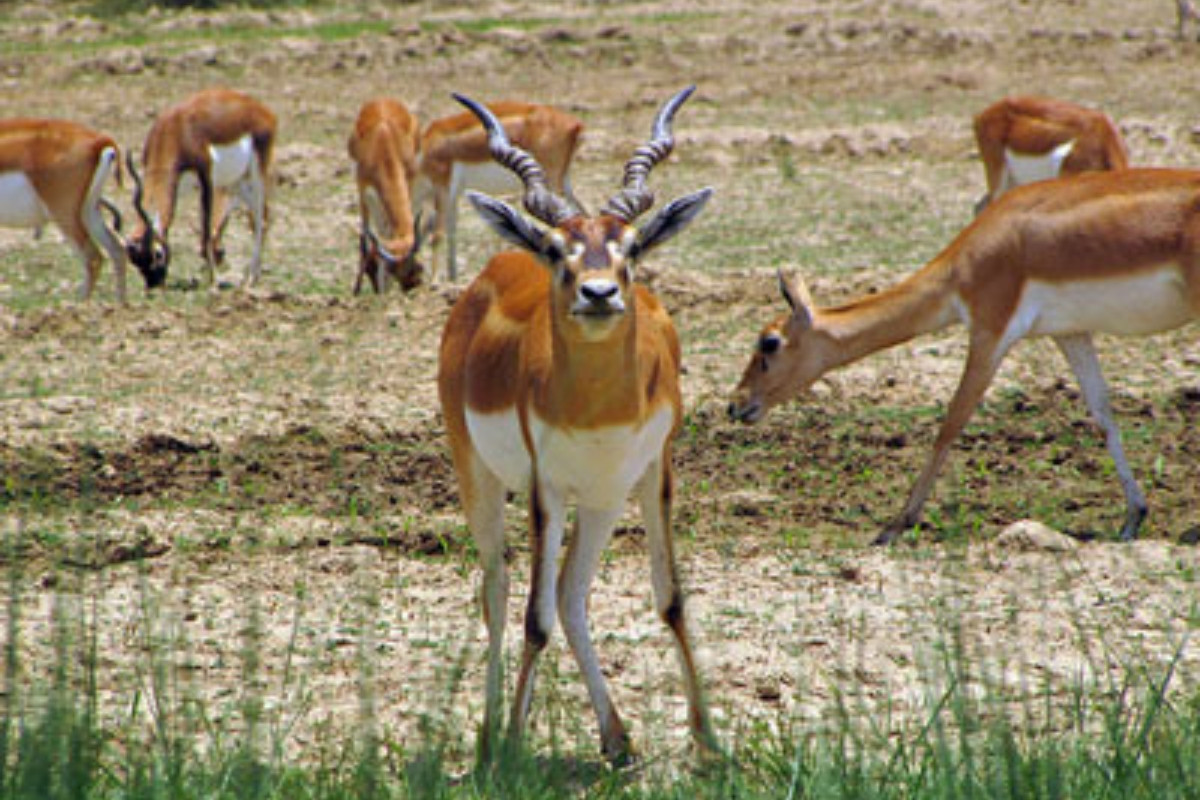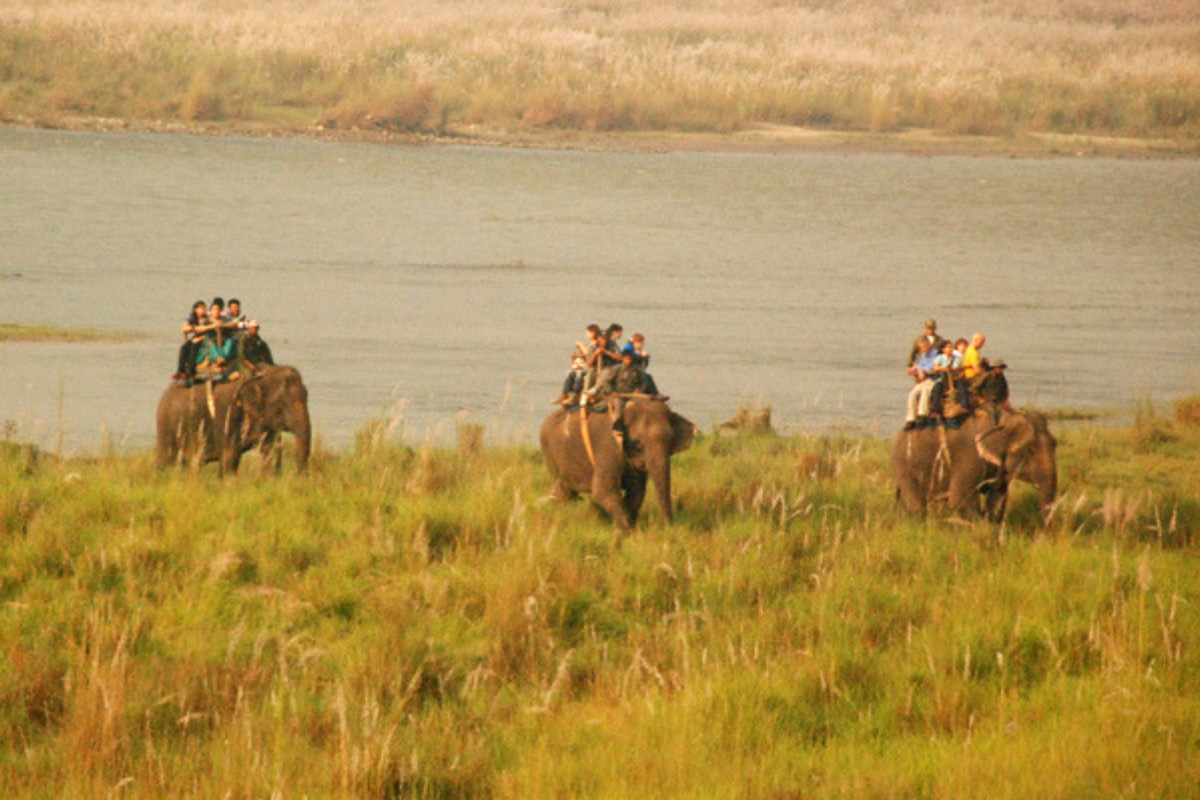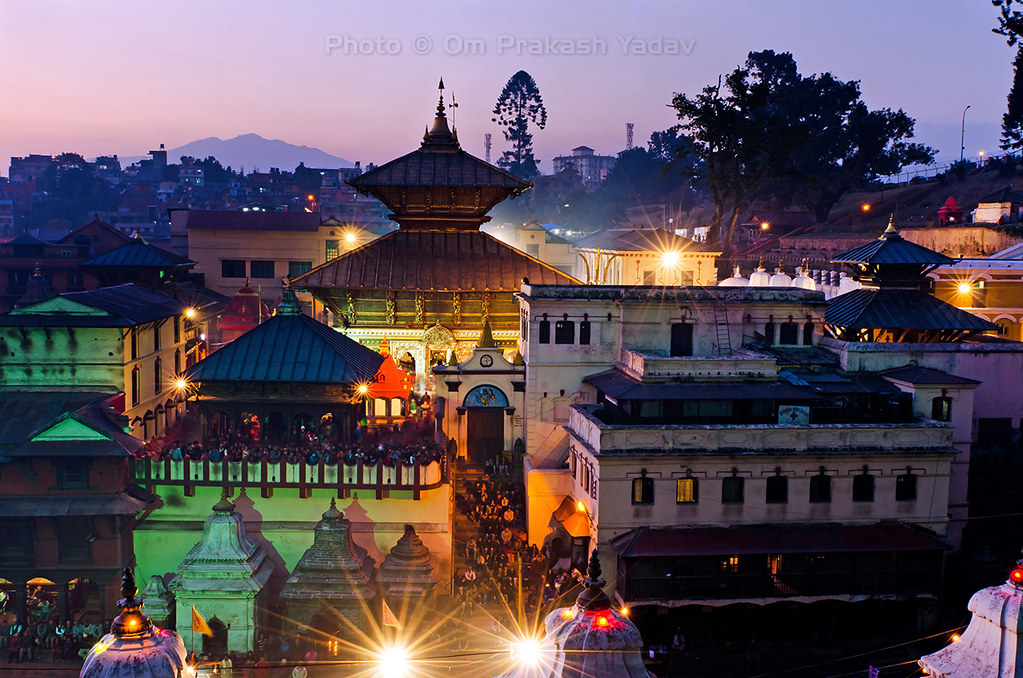Nepal is a country with diverse geographical and geological structures. Walking away from busy modern life to the extensive conversation system will quench your thirst for nature. Along with the preservation of various animals and plants, the beautiful national parks of Nepal hold astonishing natural beauty. While in Nepal, visit the national parks and experience the unleashing beauty of nature.
Rara National Park
This is Nepal's smallest national park with the biggest lake. Covering an area of 106 sq km Rara National Park is located in the far north-west districts of Mugu and Jumla. Lake Rara, with its crystal clear water, is the heart of the park and one of the primary sources of the Mugu Karnali River. The area around the lake is dominated by subalpine forests of blue pine, rhododendron, juniper, spruce, oak, and cypress supports a wide variety of wildlife including Musk Deer, Himalayan Black Bear, Leopard, Jackal, Himalayan Thar, etc. Migratory birds and waterfowl like Coots, Great-crested Grebe, Black-necked Grebe, Red Crested Pochard, Mallard, Common Teal, Merganser, and Gulls. The Snow Trout is the only fish recorded in the lake so far.
Rara National Park is 3 days walk from Jumla or a week trek from Surkhet. You will have to go through Nepalganj to reach both destinations. The easiest way, however, is an hour-long charter flight to Gamghadi from where Lake Rara is an easy 2-hour walk. The best season to visit the park is in spring or in late autumn. There are no lodges in the park.
Buddha Air has daily and directs flights to both Nepalgunj and Surkhet. To book your flights please, visit domestic flights to Nepal.

Makalu- Barun National Park
Covering 2330 sq. km Makalu Barun National Park is spread over the districts of Sankhuwasabha and Solukhumbu in northeast Nepal. The park has a unique ecosystem that is a combination of sub-tropical to alpine forests and boasts of 47 species of orchids, 67 species of medicinal herbs, and 25 of Nepal's 30 varieties of rhododendron, 19 bamboo species, 15 oak species, 48 species of primrose and 86 species of fodder trees. 400 species of birds, including the rare Spotted Wren Babbler and the Olive Ground Warbler, offer excellent bird watching opportunities for ornithologists. The endangered Red Panda, Snow Leopard, and other usual suspects such as the Himalayan Black Bear, Clouded Leopard, Ghoral, Tahr, and Wild Boar, barking deer, Himalayan Marmot, Weasel, Langur monkey, and Serow can also be seen in the park. In addition, the Arun River with its 84 varieties of fish originates in the park and flows down south to converge in the Saptakoshi River.
The only way to the Makalu Barun National Park is to fly to Tumlingtar from Kathmandu and take a six-day walk that brings you to the park headquarters in Seduwa. The best season to visit the park is in late spring or autumn.
Buddha Air has daily and directs flights to Tumlingtar. To book your flights please, visit domestic flights to Nepal.
Bardia National Park
Located in the southwest and spread over 968 km Bardia National Park is one of the largest and most undisturbed protected areas in the Tarai. Its most famous inhabitant was until recently Gajraj touted as Asia's biggest wild elephant which used to frequently travel across Nepal and India through the forest corridors. However, the park has also been successful in protecting the endangered Royal Bengal Tiger, One-horned Rhinoceros, and the Asiatic Elephant. Karnali, one of Nepal's biggest rivers borders the park in the west, while the Churia hill range forms the northern border. The Babai River, one of the tributaries of the Karnali River flows right through the park. The thick forests of the Shorea Robusta and grasslands render this region an ideal home to some 30 different mammals, 250 species of birds like the Bengal Florican, Silver Eared Mesia, and Sarus as well as several species of reptiles. The Gangetic Dolphin can also be frequently spotted in the Karnali River.
Bardia National Park is 95km from Nepalgunj. There are a few lodges and resorts around the park and the best season to visit is from October - March.
Buddha Air has daily and directs flights to Nepalgunj. To book your flights please, visit domestic flights to Nepal.

Chitwan National Park
Chitwan National Park in south-central Nepal was declared a UNESCO World Heritage Site in 1979. The park covers an area of 932 sq. km and is home to the Royal Bengal Tiger and the one-horned Rhinoceros among the 50 or so mammals, 526 birds, and 49 amphibians’ reptiles. The Narayani and Rapti rivers provide habitat to the endangered Snouted Gharial, Marsh Mugger, and the Gangetic Dolphin. The bird population includes the likes of the Paradise Flycatcher, Indian Pitta and parakeets, and migratory birds like the Brahmin Duck, Pintail, Bar-headed Geese, Cormorants, and other feathered friends from Siberia.
Chitwan is a five hours drive from Kathmandu. An old runway strip in Meghauli is also used for charter flights. There are several world-class safari lodges inside the park and numerous other hotels and lodges outside the park. Visitors to the park are taken on jungle safaris on elephant back, jeeps, and nature walk as well as boat rides in the Narayani and Rapti rivers. The park headquarters at Kasara is 21Km from Bharatpur which is 20 minutes by air or 146 km by road from Kathmandu. The best season to visit the park is from October to February when it's not too hot.
Buddha Air has daily and directs flights to Bharatpur, Chitwan. To book your flights please, visit domestic flights to Nepal.

Shey-Phoksundo National Park
Spread over 3555 sq km, Shey-Phoksundo, Nepal's biggest national park is located in the trans-Himalayan region of Dolpo. The park gets its name from Phoksundo, a beautiful turquoise blue Himalayan lake in the southern area. To the north are the peaks of Kanjiroba and Hiechuli, both of which are above 6000m. With diverse terrain and altitude variation, the park is spread over Dolpa and Mugu districts and supports a broad range of wildlife and vegetation with coniferous forests on the south side and high alpine grassy meadows in the north. The park is home to 286 species of plants many of which have high medicinal value. Wild sheep, Ghoral, Musk Deer, Snow Leopard, Wild Dog, Marmot, Weasel, Mouse Hare, monkeys, Himalayan Thar, Himalayan black bear, and Jackals can also be seen. There are over 200 species of birds including the Yellow-throated Marten, Tibetan Partridge, Wood Snip, White-throated Tit, Impheyan, and Cheer Pheasant, Tibetan Snow Cock, Tibetan Twit, Himalayan Griffon & Lammergeyer.
The best season to visit the park is between June - September as the area falls in the trans-Himalayan region and receives little rainfall. Visitors usually fly to Juphal airport in Dolpo from Nepalgunj or Pokhara and take a three-day walk to the park headquarters in Sumduwa.
Buddha Air has daily and directs flights to Nepalgunj and Pokhara. To book your flights please, visit domestic flights to Nepal.
 Nepal
Nepal
 India
India
 Afghanistan
Afghanistan
 Albania
Albania
 Algeria
Algeria
 American Samoa
American Samoa
 Andorra
Andorra
 Angola
Angola
 Anguilla
Anguilla
 Antarctica
Antarctica
 Antigua and Barbuda
Antigua and Barbuda
 Argentina
Argentina
 Armenia
Armenia
 Aruba
Aruba
 Australia
Australia
 Austria
Austria
 Azerbaijan
Azerbaijan
 Bahrain
Bahrain
 Bangladesh
Bangladesh
 Barbados
Barbados
 Belarus
Belarus
 Belgium
Belgium
 Belize
Belize
 Benin
Benin
 Bermuda
Bermuda
 Bhutan
Bhutan
 Bolivia
Bolivia
 Bosnia and Herzegovina
Bosnia and Herzegovina
 Botswana
Botswana
 Brazil
Brazil
 Brunei
Brunei
 Bulgaria
Bulgaria
 Burkina Faso
Burkina Faso
 Burundi
Burundi
 Cambodia
Cambodia
 Cameroon
Cameroon
 Canada
Canada
 Cape Verde
Cape Verde
 Caribbean Netherlands
Caribbean Netherlands
 Cayman Islands
Cayman Islands
 Central African Republic
Central African Republic
 Chad
Chad
 Chile
Chile
 China
China
 Christmas Island
Christmas Island
 Cocos (Keeling) Islands
Cocos (Keeling) Islands
 Colombia
Colombia
 Comoros
Comoros
 Congo, Democratic Republic of the
Congo, Democratic Republic of the
 Congo, Republic of the
Congo, Republic of the
 Cook Islands
Cook Islands
 Costa Rica
Costa Rica
 Cote d Ivoire
Cote d Ivoire
 Croatia
Croatia
 Cuba
Cuba
 Curaçao
Curaçao
 Cyprus
Cyprus
 Czech Republic
Czech Republic
 Denmark
Denmark
 Djibouti
Djibouti
 Dominica
Dominica
 Dominican Republic
Dominican Republic
 East Timor
East Timor
 Ecuador
Ecuador
 Egypt
Egypt
 El Salvador
El Salvador
 Equatorial Guinea
Equatorial Guinea
 Eritrea
Eritrea
 Estonia
Estonia
 Ethiopia
Ethiopia
 Falkland Islands (Malvinas)
Falkland Islands (Malvinas)
 Faroe Islands
Faroe Islands
 Federated States of Micronesia
Federated States of Micronesia
 Fiji
Fiji
 Finland
Finland
 France
France
 French Guiana
French Guiana
 French Polynesia
French Polynesia
 Gabon
Gabon
 Georgia
Georgia
 Germany
Germany
 Ghana
Ghana
 Gibraltar
Gibraltar
 Greece
Greece
 Greenland
Greenland
 Grenada
Grenada
 Guadeloupe
Guadeloupe
 Guam
Guam
 Guatemala
Guatemala
 Guernsey
Guernsey
 Guinea
Guinea
 Guinea-Bissau
Guinea-Bissau
 Guyana
Guyana
 Haiti
Haiti
 Honduras
Honduras
 Hong Kong
Hong Kong
 Hungary
Hungary
 Iceland
Iceland
 Indonesia
Indonesia
 Iran
Iran
 Iraq
Iraq
 Ireland
Ireland
 Isle of Man
Isle of Man
 Israel
Israel
 Italy
Italy
 Jamaica
Jamaica
 Japan
Japan
 Jersey
Jersey
 Jordan
Jordan
 Kazakhstan
Kazakhstan
 Kenya
Kenya
 Kiribati
Kiribati
 Korea, North
Korea, North
 Korea, South
Korea, South
 Kuwait
Kuwait
 Kyrgyz Republic
Kyrgyz Republic
 Kyrgyzstan
Kyrgyzstan
 Laos
Laos
 Latvia
Latvia
 Lebanon
Lebanon
 Lesotho
Lesotho
 Liberia
Liberia
 Libya
Libya
 Liechtenstein
Liechtenstein
 Lithuania
Lithuania
 Luxembourg
Luxembourg
 Macao
Macao
 Macedonia
Macedonia
 Madagascar
Madagascar
 Malawi
Malawi
 Malaysia
Malaysia
 Maldives
Maldives
 Mali
Mali
 Malta
Malta
 Marshall Islands
Marshall Islands
 Martinique
Martinique
 Mauritania
Mauritania
 Mauritius
Mauritius
 Mayotte
Mayotte
 Mexico
Mexico
Moldova
 Monaco
Monaco
 Mongolia
Mongolia
 Montenegro
Montenegro
 Montserrat
Montserrat
 Morocco
Morocco
 Mozambique
Mozambique
 Myanmar (Burma)
Myanmar (Burma)
 Namibia
Namibia
 Nauru
Nauru
 Netherlands
Netherlands
 New Caledonia
New Caledonia
 New Zealand
New Zealand
 Nicaragua
Nicaragua
 Niger
Niger
 Niue
Niue
 Norfolk Island
Norfolk Island
 Northern Mariana Islands
Northern Mariana Islands
 Norway
Norway
 Oman
Oman
 Pakistan
Pakistan
 Palau
Palau
 Palestine
Palestine
 Panama
Panama
 Papua New Guinea
Papua New Guinea
 Paraguay
Paraguay
 Peru
Peru
 Philippines
Philippines
 Poland
Poland
 Portugal
Portugal
 Puerto Rico
Puerto Rico
 Qatar
Qatar
 Reunion
Reunion
 Romania
Romania
 Russia
Russia
 Rwanda
Rwanda
 Saint Barthélemy
Saint Barthélemy
 Saint Kitts and Nevis
Saint Kitts and Nevis
 Saint Lucia
Saint Lucia
 Saint Martin
Saint Martin
 Saint Vincent and the Grenadines
Saint Vincent and the Grenadines
 Samoa
Samoa
 San Marino
San Marino
 Sao Tome and Principe
Sao Tome and Principe
 Saudi Arabia
Saudi Arabia
 Senegal
Senegal
 Serbia and Montenegro
Serbia and Montenegro
 Seychelles
Seychelles
 Sierra Leone
Sierra Leone
 Singapore
Singapore
 Sint Maarten
Sint Maarten
 Slovakia
Slovakia
 Slovenia
Slovenia
 Solomon Islands
Solomon Islands
 Somalia
Somalia
 South Africa
South Africa
 South Sudan
South Sudan
 Spain
Spain
 Sri Lanka
Sri Lanka
 St. Helena
St. Helena
 St. Pierre And Miquelon
St. Pierre And Miquelon
 Sudan
Sudan
 Suriname
Suriname
 Swaziland
Swaziland
 Sweden
Sweden
 Switzerland
Switzerland
 Syria
Syria
 Taiwan
Taiwan
 Tajikistan
Tajikistan
 Tanzania
Tanzania
 Thailand
Thailand
 The Bahamas
The Bahamas
 The Gambia
The Gambia
 Togo
Togo
 Tonga
Tonga
 Trinidad and Tobago
Trinidad and Tobago
 Tunisia
Tunisia
 Turkey
Turkey
 Turkmenistan
Turkmenistan
 Turks and Caicos Islands
Turks and Caicos Islands
 Tuvalu
Tuvalu
 Uganda
Uganda
 Ukraine
Ukraine
 United Arab Emirates
United Arab Emirates
 United Kingdom
United Kingdom
 United States
United States
 Uruguay
Uruguay
 US Minor Outlying Islands
US Minor Outlying Islands
 Uzbekistan
Uzbekistan
 Vanuatu
Vanuatu
 Vatican City (Holy See)
Vatican City (Holy See)
 Venezuela
Venezuela
 Vietnam
Vietnam
 Virgin Islands (British)
Virgin Islands (British)
 Virgin Islands(U.S.)
Virgin Islands(U.S.)
 Wallis and Futuna Islands
Wallis and Futuna Islands
 Western Sahara
Western Sahara
 Yemen
Yemen
 Yugoslavia
Yugoslavia
 Zaire
Zaire
 Zambia
Zambia
 Zimbabwe
Zimbabwe



